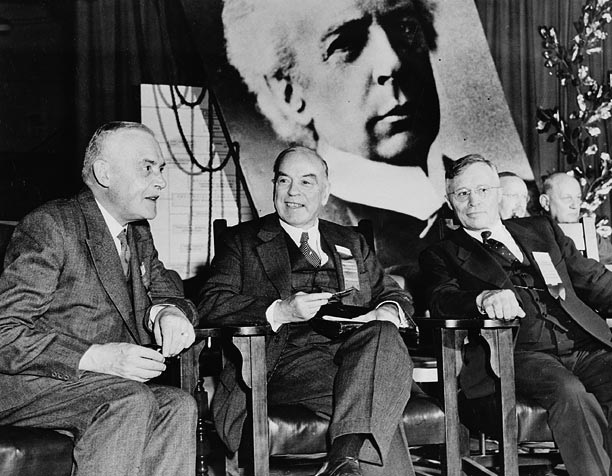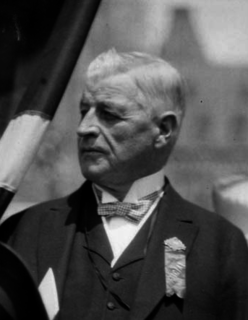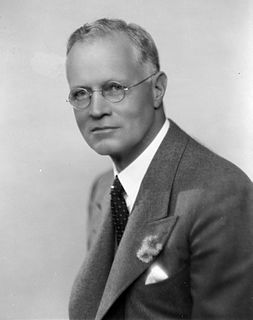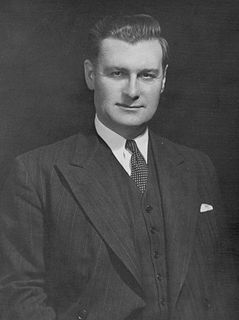| Date | August 7, 1948 |
|---|---|
| Convention | Ottawa Coliseum, Lansdowne Park, Ottawa, Ontario |
| Resigning leader | William Lyon Mackenzie King |
| Won by | Louis St. Laurent |
| Ballots | 1 |
| Candidates | 3 |
The 1948 Liberal Party of Canada leadership election was called to replace retiring Liberal leader and sitting Prime Minister William Lyon Mackenzie King. The convention was held exactly 29 years after the 1919 leadership convention that saw King elected Liberal leader.
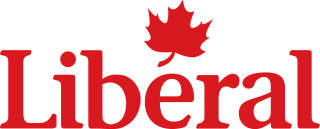
The Liberal Party of Canada is the oldest and longest-serving governing political party in Canada. The Liberals form the current government, elected in 2015. The party has dominated federal politics for much of Canada's history, holding power for almost 69 years in the 20th century—more than any other party in a developed country—and as a result, it is sometimes referred to as Canada's "natural governing party".

The Prime Minister of Canada is the primary minister of the Crown, chairman of the Cabinet, and Canada's head of government. The current, and 23rd, Prime Minister of Canada is the Liberal Party's Justin Trudeau, following the 2015 Canadian federal election. Canadian prime ministers are styled as The Right Honourable, a privilege maintained for life.

William Lyon Mackenzie King, also commonly known as Mackenzie King, was the dominant Canadian political leader from the 1920s through the 1940s. He served as the tenth prime minister of Canada in 1921–1926, 1926–1930 and 1935–1948. He is best known for his leadership of Canada throughout the Second World War (1939–1945) when he mobilized Canadian money, supplies and volunteers to support Britain while boosting the economy and maintaining morale on the home front. A Liberal with 21 years and 154 days in office, he was the longest-serving prime minister in Canadian history. Trained in law and social work, he was keenly interested in the human condition, and played a major role in laying the foundations of the Canadian welfare state.
Contents
- Candidates
- James Garfield Gardiner
- Charles Gavan Power
- Louis St. Laurent
- Withdrawn candidates
- Results
- References
Secretary of State for External Affairs Louis St. Laurent defeated Minister of Agriculture (and former Premier of Saskatchewan) James Garfield Gardiner and former cabinet minister Charles Gavan Power on the first ballot, and would be sworn in as Prime Minister later that year.

The Minister of Foreign Affairs is the Minister of the Crown in the Canadian Cabinet who is responsible for overseeing the federal government's international relations and heads the Department of Global Affairs, though the Minister of International Trade leads on international trade issues. In addition to the Department, the Minister is also the lead in overseeing the International Centre for Human Rights and Democratic Development and the International Development Research Centre.
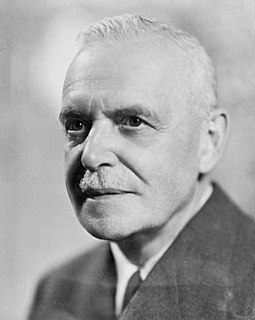
Louis Stephen St. Laurent was the 12th prime minister of Canada, from 15 November 1948 to 21 June 1957. He was a Liberal with a strong base in the Catholic francophone community, from which base he had long mobilised support to Prime Minister William Lyon Mackenzie King. His foreign policy initiatives transformed Canada from an isolationist ex-colony with little role in world affairs to an active "middle power". St. Laurent was an enthusiastic proponent of Canada's joining NATO in 1949 to fight the spread of Communism, overcoming opposition from some intellectuals, the Labor-Progressive Party, and many French Canadians. The contrast with Mackenzie King was not dramatic – they agreed on most policies. St. Laurent had more hatred of communism, and less fear of the United States. He was neither an idealist nor a bookish intellectual, but an "eminently moderate, cautious conservative man ... and a strong Canadian nationalist".

The Minister of Agriculture is a Minister of the Crown in the Cabinet of Canada, who is responsible for overseeing several organizations including Agriculture and Agri-Food Canada, Canadian Dairy Commission, Farm Credit Canada, Canadian Food Inspection Agency, National Farm Products Council and the Canadian Grain Commission. The current Minister of Agriculture is Marie-Claude Bibeau.














